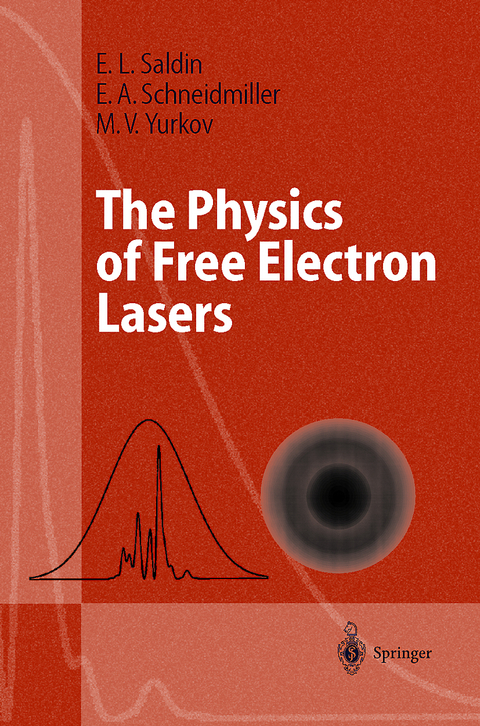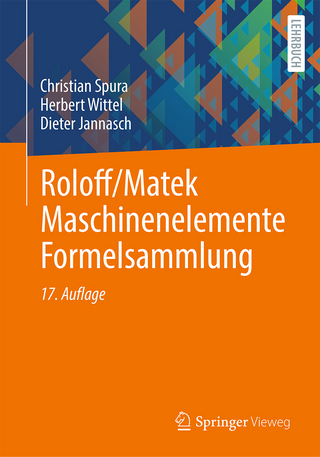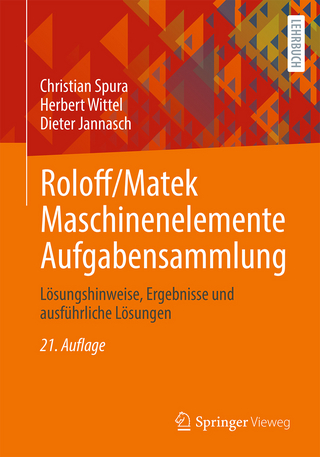
The Physics of Free Electron Lasers
Seiten
1999
|
2000
Springer Berlin (Verlag)
978-3-540-66266-2 (ISBN)
Springer Berlin (Verlag)
978-3-540-66266-2 (ISBN)
The Free Electron Laser (FEL) will be an outstanding tool for research and industrial application. This book describes the physical fundamentals on the basis of classical mechanics, electrodynamics, and the kinetic theory of charged particle beams, and will be suitable for graduate students and scientists alike. After a short introduction, the book discusses the theory of the FEL amplifier and oscillator, and diffraction effects in the amplifier; waveguide FEL, and shot noise are also treated.
This book contains a systematic treatment of the basic principles of free elec tron laser (FEL) physics. It is primarily intended for physicists specializing in FEL physics and related fields: laser physics, microwave electronics, particle accelerator physics, etc. At the same time it might be useful for those who use the FEL as a research or industrial tool. The treatment requires that the reader has a knowledge of classical me chanics and electrodynamics. It is assumed that the reader is familiar with the kinetic theory of charged particle beams, in particular the Vlasov equa tion. All the results presented here are derived from "first principles", and all steps involving physical principles are given. To preserve a self-consistent style, we place the derivation of auxiliary results in appendices. Theoretical study is performed with an extensive use of similarity tech niques, so the results obtained are simultaneously highly general and com pletely specified. The use of similarity techniques involves a particular way of thinking and leads to a deeper insight into FEL physics. We use a synthetic approach to present the material: some simple models are studied first, and more complicated ones are introduced gradually. We start with the one-dimensional theory of the FEL amplifier and FEL oscilla tor. Then we move on the analysis of diffraction effects and waveguide effects. Finally, we introduce the reader to the part of FEL theory dealing with the start-up from shot noise in the electron beam.
This book contains a systematic treatment of the basic principles of free elec tron laser (FEL) physics. It is primarily intended for physicists specializing in FEL physics and related fields: laser physics, microwave electronics, particle accelerator physics, etc. At the same time it might be useful for those who use the FEL as a research or industrial tool. The treatment requires that the reader has a knowledge of classical me chanics and electrodynamics. It is assumed that the reader is familiar with the kinetic theory of charged particle beams, in particular the Vlasov equa tion. All the results presented here are derived from "first principles", and all steps involving physical principles are given. To preserve a self-consistent style, we place the derivation of auxiliary results in appendices. Theoretical study is performed with an extensive use of similarity tech niques, so the results obtained are simultaneously highly general and com pletely specified. The use of similarity techniques involves a particular way of thinking and leads to a deeper insight into FEL physics. We use a synthetic approach to present the material: some simple models are studied first, and more complicated ones are introduced gradually. We start with the one-dimensional theory of the FEL amplifier and FEL oscilla tor. Then we move on the analysis of diffraction effects and waveguide effects. Finally, we introduce the reader to the part of FEL theory dealing with the start-up from shot noise in the electron beam.
1. Introduction.- 2. One-Dimensional Theory of the FEL Amplifier.- 3. One-Dimensional Theory of the FEL Oscillator.- 4. Diffraction Effects in the FEL Amplifier.- 5. Waveguide FELs.- 6. FEL Amplifier Start-up from Shot Noise.- Appendices.- A.1 The Extended Hamiltonian Formalism.- A.2 Longitudinal Space Charge Field of a Modulated Electron Beam with Finite Transverse Size.- A.3 Green's Function for a Homogeneous Waveguide.- A.4 Eigenfunctions of a Passive Circular Waveguide.- A.5 Calculation of the Sums in (5.119).- A.6 List of Symbols.- Suggested Further Reading.- References.
| Erscheint lt. Verlag | 22.11.1999 |
|---|---|
| Reihe/Serie | Advanced Texts in Physics |
| Zusatzinfo | X, 470 p. |
| Verlagsort | Berlin |
| Sprache | englisch |
| Maße | 155 x 235 mm |
| Gewicht | 738 g |
| Themenwelt | Technik ► Maschinenbau |
| Schlagworte | classical mechanics • diffraction • electrodynamics • Elektronenlaser • Laser • Mechanics |
| ISBN-10 | 3-540-66266-9 / 3540662669 |
| ISBN-13 | 978-3-540-66266-2 / 9783540662662 |
| Zustand | Neuware |
| Haben Sie eine Frage zum Produkt? |
Mehr entdecken
aus dem Bereich
aus dem Bereich
Buch | Softcover (2023)
Springer Vieweg (Verlag)
24,99 €
Normung, Berechnung, Gestaltung
Buch | Softcover (2023)
Springer Vieweg (Verlag)
39,99 €
Lösungshinweise, Ergebnisse und ausführliche Lösungen
Buch | Softcover (2023)
Springer Vieweg (Verlag)
26,99 €


